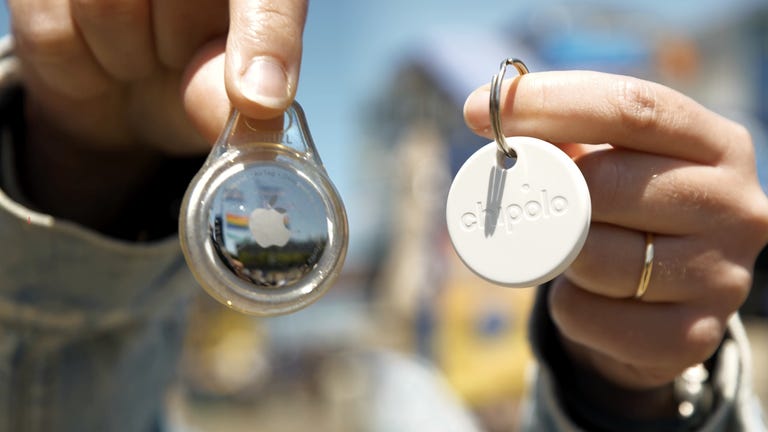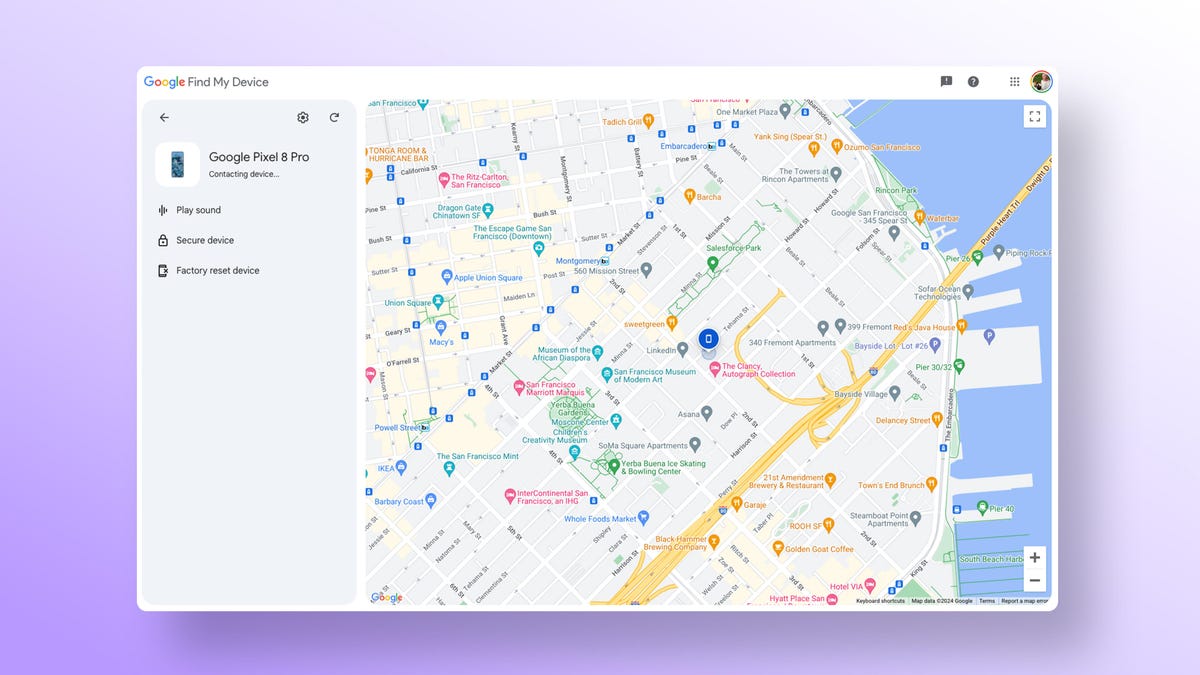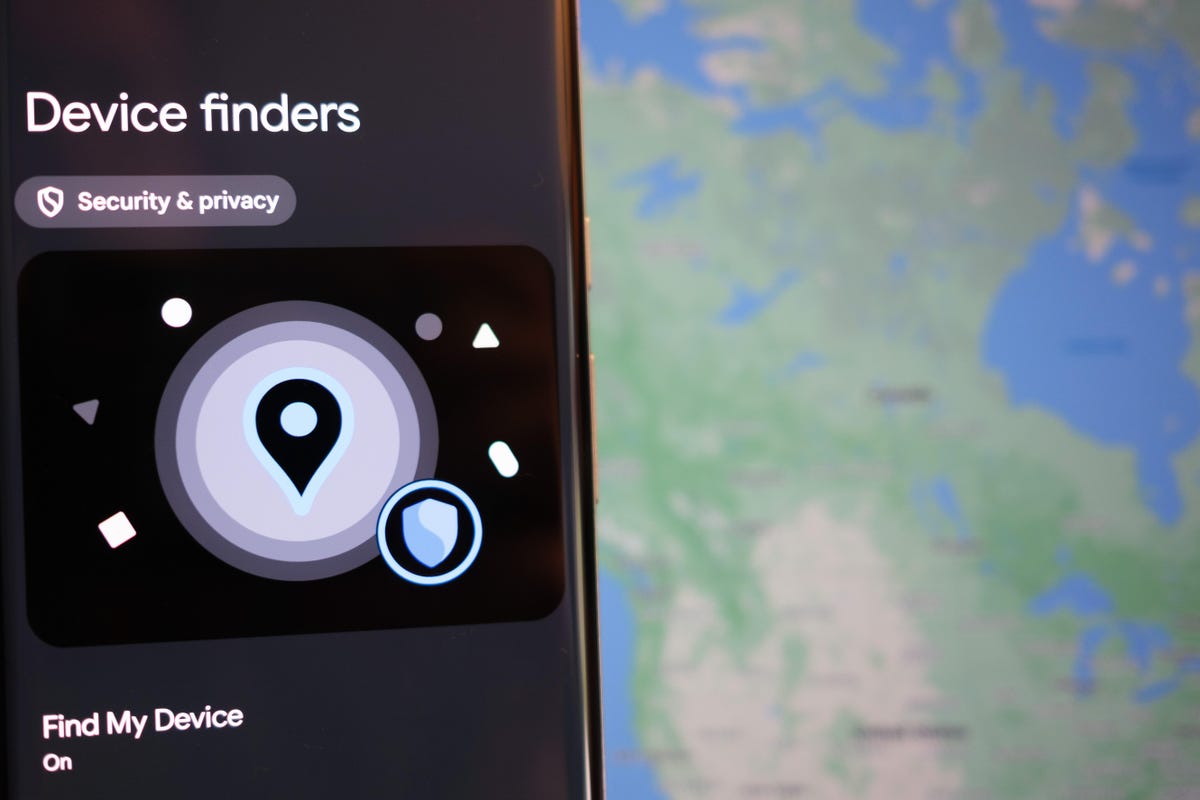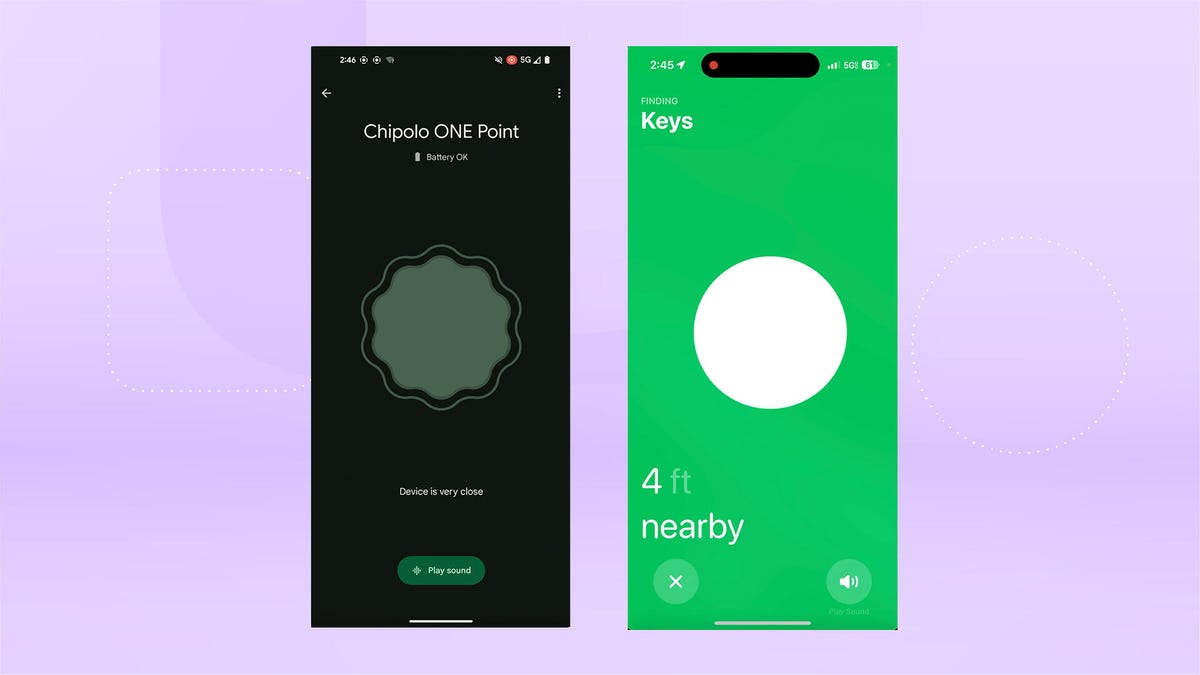Google recently expanded and improved its Find My Device network, formerly known as the 11-year-old Android Device Manager, to help you find Android phones, tablets, Wear OS devices like the Pixel Watch, supported headphones and, of course, Bluetooth trackers such as A Point from Chipolo.
Apple’s Find My network has been around since 2010 and can currently find Apple products like iPhone, iPad, Apple Watch and AirTags, as well as third-party devices compatible with the network like Nomad’s Tracking Card .
But how do the networks compare in 2024? To find out, I took the Chipolo One Point and an AirTag to Pier 39, San Francisco’s most popular tourist destination. Then CNET’s John Kim hid the trackers outside of Bluetooth range and I had to locate them using the Find My app on an iPhone 14 Pro and Find My Device on a Google Pixel 8 Pro. Here’s how it went.

Look at this: Apple Find My Network and Android Find My Device
How Find My and Find My Device work
Apple and Google’s systems use an encrypted, crowdsourced network of other phones and devices running iOS or Android to help find lost items. They each allow you:
- See the current and last known locations of an item on a map
- Play a sound to find an item if it’s nearby (if supported by the device)
- Share things like Bluetooth trackers with a friend so they can see the location too
Configuring Bluetooth trackers on each network is very simple. Bring them closer to your phone and a pop-up appears. With Chipolo’s One Point, you’ll need to tap the tracker once for it to register on Android and trigger the Fast Pair pop-up.

The Find My Device web interface allows you to view location information on a map.
How Find My and Find My Device differ
Apple’s Find My network has a slight advantage since it was overhauled in 2021 to support searching for third-party items and in preparation for the AirTag launch. Compare that to Google’s Find My Device, which gained similar support for third-party devices and trackers earlier this year.
At the moment, Find My Device trackers only support Bluetooth, while Apple AirTags use both Bluetooth and ultra-wideband. This is the technology that pinpoints a precise location and displays distance indicators with steering assistance in the Find My app.
Apple AirTags also have separation alerts, called Notify When Left Behind. Select this option in the Find My app and you’ll receive a notification when you leave something behind outside of Bluetooth range.
Apple’s Find My network only needs one iPhone or iOS device, connected to the Internet, to locate a lost item. If a Find My device is not connected to the Internet and comes across a lost item, the location of the item is encrypted and transmitted from one Find My device to another until it reaches a device connected, like an iPhone.
Google’s Find My Device settings default to “with network in high traffic areas only.” This means that the network needs multiple Android devices to pass by to detect the location of an item and then only shows you a central point triangulated from those location reports.
However, you can go to Security > Find my device > Find your devices offline and change this to with network in all areas. It can help find other people’s items in low-traffic areas and only requires one other Android device to locate an item, similar to Apple’s Find My. Android’s official Find My Device help page says: “Users who enable this option help each other find items in high-traffic and low-traffic areas. This option can help you find your lost items faster.”
For the purposes of this experiment, I left all settings at default to see what would happen.

Which tracker did I find first?
Once the AirTag and Chipolo tracker were “misplaced” together somewhere in Pier 39, I loaded the apps on the iPhone and Pixel 8 Pro and marked them as lost, then started a timer. Just four minutes and forty-five seconds into the challenge, I received the first notification from Apple’s Find My. Five minutes later, I received another ping locating the AirTag.
I waited 30 minutes to see if Google’s network would find the tracker, but I received no notification. I was, however, able to see an approximate location of the Chipolo beacon on a map in the Find My Device app. Oddly enough, the network was able to triangulate a rough location, but it never informed me that the tracker had been found.
Then I went looking for the trackers using the location tools built into each app. Apple’s Find My gave me walking directions to the AirTag on a map, so I could see it was only a few minutes away. Google’s Find My Device was less helpful and only showed me a map view, with no directions.
Once in Bluetooth range, the AirTag allowed me to display precise tracking options using an ultra-wide band so I could move the phone and have an arrow pointing me in the right direction with distance markers . In contrast, the Chipolo tracker has a shape that “fills in” as you get closer to an object.

The Chipolo tracker has a shape that fills in (left) while the AirTag has specific distance information, thanks to ultra-wideband.
I knew I was close, but I still couldn’t see them, so I played a sound on each one. The AirTag was quite faint, but I could hear the Chipolo even in the noisy surroundings of Pier 39.
So the ultra-wideband directions helped me get closer to the AirTag when I couldn’t see it, but the loud sound of the Chipolo made a big difference in finding the tracker.
Apple’s Find My network is more robust, for now
My highly unscientific test showed that Apple’s Find My network helped locate my lost item much faster than Google’s Find My Device network. I would expect this to improve over time as the network continues to roll out to Android devices, especially if more users choose to locate items in all areas. Adding ultra-wideband support to Android’s trackers would also level the playing field: many Android phones already have an ultra-wideband chip.
I look forward to revisiting this challenge in a few months to see how Google’s Find My Device improves, especially once new devices connect to the network.
Apple AirTags: discover one of the smallest Apple products ever
See all photos